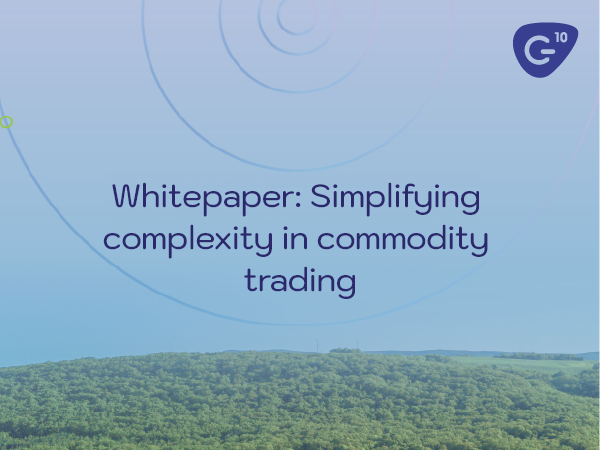Anybody involved in the cotton industry will know that cotton trading involves processing an awful lot of data. Different types of software have been developed to help make this processing easier, including CTRM and Commodity Management systems. But whilst these systems can make data processing much faster and simpler once the data is in the system, the challenge lies in getting this data into the system in the first place.
Data requirements for a cotton trading system
Cotton contracts and shipments are made up of multiple lots, and within each lot are many bales, usually over 100 per lot. Each of these bales has its own quality data that needs to be managed across multiple stages of the supply chain and your operations.
Depending on the origination country and the organisation’s processes, this could include pre-takeup estimates, take-up data, schedule and container data, and additional HVI data from other inspections. Without an effective system to manage this data and process updates, there is a high risk of errors that can be difficult to detect and can cause significant financial risks if they are not corrected before the data is used in allocations and shipping documents.
Once uploaded, the data is then used by the trading organisation to populate the documents for their outbound shipments and ensure that each sales shipment is within the contract’s tolerance. They may use lots from several purchase contracts or shipments for each sales shipment, so need to collate information from these multiple sources to create packing lists, bale-by-bale container-wise packing lists, and other quality assurance documents.
And it is not just quality data that needs to be traced and utilised. Trade finance documents such as Letters of Credit and the Beneficiary’s Certificate may also need to incorporate information from several different purchase contracts. And with potentially thousands of bales within a contract, the ability to collate this data, report on it and provide a simple, digestible overview is essential too.
Managing large data sets in Commodity Management
Each trading company will need to manage different data sets and in different ways. Traders therefore need to ensure their Commodity Management system can process these large data sets, but equally importantly, that the system is flexible enough to work with them all.
One of the main challenges in managing this data is getting it into the CTRM or Commodity Management system in the first place. Manually adding multiple quality fields such as USDA grades, micronaire, length, and more for several hundred bales, and ensuring each bale is attached to the correct lot and contract would be incredibly time-consuming. It would also introduce the risk of copying errors and be very difficult to rectify any mistakes.
Where possible, at Gen10 we use APIs to automatically import data from external systems into CommOS, our Commodity Management system, for our clients. This means that our clients always have up-to-date, accurate information from their supply chain partners, without any of the operational risks associated with manual intervention.
However, this is not always an option offered by external partners, which is why we have also developed functionality for our clients to upload quality data directly from an Excel spreadsheet and automatically populate all relevant fields within the system.
This is another instance where flexibility is essential. There may be a range of different counterparties all using spreadsheets to provide similar quality data in different formats, so the system needs to be able to update fields based on these different documents.
For example, within CommOS our clients can specify the contract and schedule, and which file they are uploading – such as take-up data from a specific broker or HVI data from an inspection company. The data is then used to automatically create the lots and bales for the contract, ready to be allocated, split, and merged as required, whilst maintaining all quality data and a full digital audit trail.
Creating sales documents
The data management requirements do not end at allocation, as there are then several sales documents that also need to include bale-by-bale data, including container-wise packing lists.
As with the data uploads, there can be several documents requiring broadly similar information in different formats. Without a Commodity Management system like CommOS, these documents can become time-intensive and highly error-prone. This can lead to delays and penalties, shipments outside of contract tolerances, and issues or delays in accessing trade finance. And even if data errors are caught before they cause financial damage, tracing and rectifying them can be difficult and time-consuming.
Commodity Management is distinct from CTRM software in that it can be used to mange your real-world logistics operations, not simply report on them after the fact. This means that when bales or lots are allocated to a shipment in a system like CommOS, their quality information is automatically included and can be used straight away to create sales documents – often also automatically.
This includes shipping and transportation documents as listed above, but also trade finance documents. And again, flexibility is essential to ensure your system can automatically create each of these documents with all the required information.
CommOS allows you to specify which documents are needed down the line when creating a contract, and add any specific document wording. This will then be pulled through along with any needed quality data when CommOS creates the required document. Clients simply select the document they would like to create from their list of unique templates and can even email it directly to the counterparty with a click.
With so much data to manage, cotton traders need an effective Commodity Management solution that allows them to manipulate, transform and compile large data sets with ease. They need to be able to create documents for external data-sharing and visualisations so that they can make the best-informed decisions. But all of this starts with the ability to upload large amounts of commodity-specific bale-level quality data into the system.
If you’d like to find out more about how Gen10 are helping our cotton clients manage their data and their operations, get in touch with us now.
Want to read more?
Subscribe now for monthly updates
By submitting your details you agree that we can store your data and communicate with you. You can opt out of these communications at any time. Read all in our Privacy Policy.



